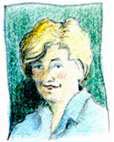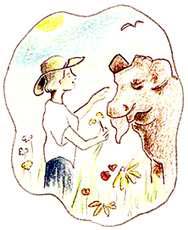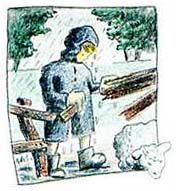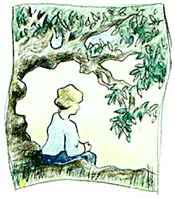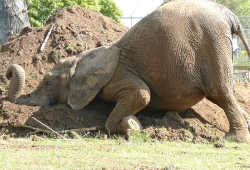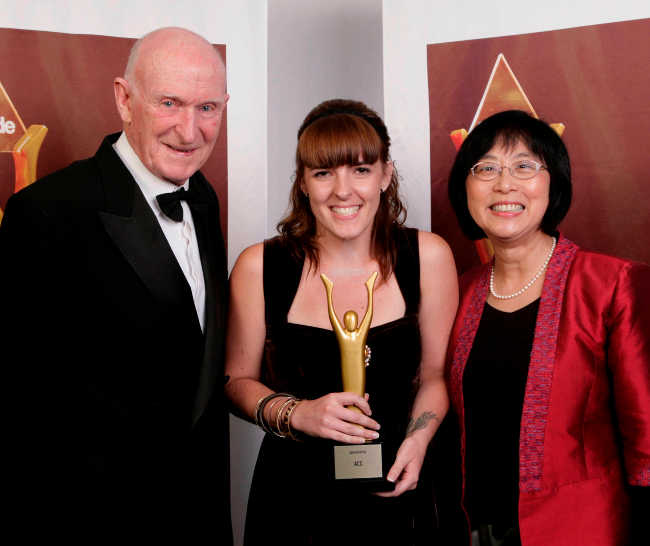Written and illustrated by Zela Charlton – 08/01/01
|
|
| Zela |
Lots of us these days have a yearning to be away from the congested noisy
streets – even the trendy pavement cafes of Ponsonby cease to appeal after
a time.
More and more of us are actually trying to escape, hence the increasing number of so-called “lifestyle blocks ” manifesting around the New Zealand countryside.
However it is not easy to make the change to the rural way of life and often the romantic images of strolling around one’s own paddocks, patting the little lambs or offering a bit of grass to the new cow wilt in the face of paddling through mud on a dark night trying to find the gap in the fence where that recalcitrant ewe escaped.
There are many townies who do not survive such trials but there are also many who doggedly remain, and at last there are new magazines and organisations that offer support – and much needed advice.
|
|
| Dream |
|
|
| Reality |
I count myself as a very experienced Small Farmer , even though that term seems vaguely insulting but preferable to the description ‘smallholder’ which preceded it.
It must be a genetic thing, I think, as most of my ancestors were farmers
, mostly on a small scale, and I myself was born on a small-holding where
my mother reared ducks and hens.
I moved onto a small farm with my new husband in my twenties in our first
attempt to opt out of the urban rat-race. This was a complete financial disaster and forced us back to jobs in towns until we could again get our
bit of land. This is a ten-acre plot of wonderful volcanic soil in Northland.
Notice that the first thing that I mention is the soil. That is the key to
everything. The key to what you can grow and when – soil is like the farm’s blood-bank, and you have to work with it in everything you do except
perhaps hydroponics or mushroom farming. You have to learn to rejoice in
mud and to understand it.
Beside the mud the life-styler must accept that there is a different time-scale to rural living. It is one of the great benefits but it takes a
bit of getting used to.
The tree that you have been watching and cosseting through the year produces only a few scruffy peaches and the rain makes sure that they rot
before they are ripe. The rural approach is a shrug and the observation that it will be better next year. Note that. Next YEAR. It will be a whole
season before that tree will even attempt to give you fruit and no amount
of ranting and raving will hurry it up by one day.
In Northland though if one crop fails, the next is right there, almost ready. Judicious – or even accidental – planting means that there can be
fruit all year – and the problems are often more concerned with disposing
of the surplus. Right at the beginning – thirty years ago – we put in a wide variety of fruit trees . That is one of the things that you can do on
a lifestyle block. Then the animals help you to eat up the fallen fruit.
It still seems strange to have to get out into the paddock early in the morning in order to beat the free-range hens to the avocados, which they
love almost as much as I do. My Irish Terrier pup has also developed a taste for them so the competition is getting fierce.
One of the problems of small farming is that of scale and variety. Economically it would be better to plant only one crop, or run one kind of animal. But that is not what life-styling is about. And so you get problems, such as with the avocados. We put in eight trees, two of each of a different kind. One went mad and became a wonderful giant playground for children; spreading branches and a place for that perfect playhouse. It does not produce any fruit but is great to look at and nicer than the urban climbing frmes. Other avocado trees grew tall and rather flimsy as they were planted too close together and we did not realise that we should have topped them . They produce quite well, but the fruitcomes at the ends of each year’s new growth, right at the top. If we had a cherry-picker, we could pick them but that would be ridiculously expensive. So we wait for the ripe fruit to fall and try to beat the hens and the dog to them.
|
|
| Dreaming |
Over the last thirty years there have been a lot of changes on my farm; we have had sheep and cows and horses, donkeys, turkeys and hens and geese. I grew flowers for the market for a time and bulbs are still produced. Now half the land is a productive kiwifruit orchard.
There are stories aplenty about all the mistakes – but it has been, and continues to be, a learning experience that keeps me young and in touch with the real things of this world. I even have my special meditation place
up under the great sweeping branches of an old puriri tree.

